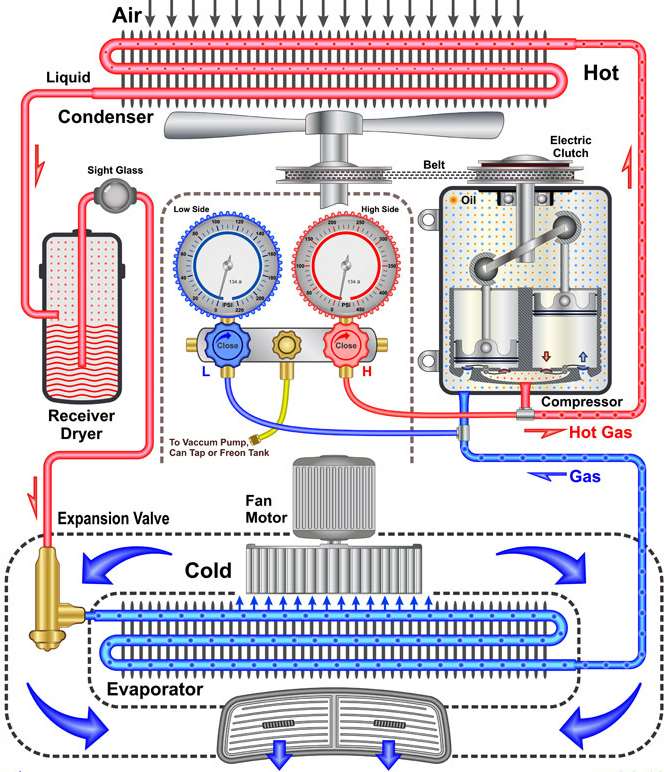When it comes to designing architectural spaces, the old saying 'form follows feature' applies. But have you ever took into consideration exactly how incorporating air conditioning right into style can boost comfort and performance all at once?
The seamless fusion of cooling down systems within the structure of a structure not only influences the owners' health yet also influences the overall sustainability of the structure. As you check out the detailed relationship in between style and cooling, a world of innovative remedies and advanced technologies awaits your discovery.
Key Takeaways
- Energy-efficient systems improve comfort and sustainability.
- Integrated a/c enhances indoor air high quality.
- Balancing aesthetics and performance makes certain optimal design.
- Future fads focus on wise, sustainable air conditioning services.

Value of Integrated Cooling
When designing rooms, integrating air conditioning is necessary for making certain the very best convenience and capability. Energy effectiveness plays an essential duty in the layout procedure, as it not just minimizes operational expenses but also minimizes the ecological impact of the structure. By including energy-efficient cooling systems, you can create a lasting and affordable remedy that benefits both the passengers and the planet.
In addition, indoor air top quality is an additional essential factor to take into account when designing with integrated cooling. Proper ventilation and filtration systems assist maintain a healthy and balanced indoor environment by decreasing contaminants and allergens. This causes enhanced passenger health and performance. When choosing a/c systems, prioritize those that supply innovative filtration technologies to enhance the general interior air high quality.
Elements Influencing Style Choices
Incorporating air conditioning into building layouts needs careful consideration of different variables that affect style choices. When incorporating a/c systems, sustainability factors to consider are critical to reduce the structure's ecological impact. Customer experience plays a substantial duty in figuring out the effectiveness and contentment with the air conditioning system.
- Energy Performance: Sustainable style techniques intend to lessen power intake, which not just benefits the setting however additionally decreases operational prices for the building owner.
- Indoor Air High Quality: Supplying a comfy and healthy and balanced interior setting improves the general individual experience, promoting productivity and health.
- Appearances and Combination: Incorporating air conditioning systems perfectly into the architectural design makes certain that performance doesn't compromise the aesthetic charm of the room, enhancing user complete satisfaction and total structure looks.
Efficient Cooling Down Methods for Structures
To maximize cooling effectiveness in buildings, consider integrating easy layout methods along with air conditioning systems. Easy air conditioning strategies can significantly lower the demand for mechanical air conditioning, bring about more sustainable options for keeping comfy interior temperature levels. Layout attributes such as shielding tools, all-natural ventilation systems, and thermal mass can assist regulate temperatures without counting exclusively on energy-intensive air conditioning. By purposefully placing home windows to make the most of cross ventilation or using reflective roofing materials to lower solar heat gain, you can harness the power of nature to cool your building efficiently.
Along with passive strategies, executing sustainable solutions like eco-friendly roofs or living wall surfaces can additionally boost cooling effectiveness by offering insulation and reducing warmth absorption. These functions not just assist in keeping comfortable indoor temperature levels however also contribute to a greener setting. By integrating passive air conditioning methods with sustainable remedies, you can produce a much more energy-efficient and environmentally friendly building style that prioritizes both comfort and conservation.
Balancing Aesthetics and Functionality
Consider the harmonious integration of visual components with functional facets in your building design to guarantee a balanced and impactful outcome. When including a/c systems into your structure style, striking an equilibrium between looks and capability is essential to developing areas that not only look great but additionally supply excellent comfort for occupants.
To accomplish this balance, maintain the following points in mind:
- Blend the System with the Surroundings: Make certain that the air conditioning units or vents effortlessly incorporate with the total visual of the space, whether via hidden placement, attractive covers, or matching colors.
- Prioritize Individual Experience: Style the airflow and temperature level control systems in a way that prioritizes the comfort and well-being of the owners. Consider elements such as air circulation, sound degrees, and simplicity of usage to enhance the total user experience.
- Incorporate Sustainable Practices: Opt for energy-efficient air conditioning solutions that not just contribute to the visual allure of the structure yet likewise advertise sustainability and lower ecological influence. https://peckhamacinstallation.co.uk
Future Trends in Architectural Air Conditioning
As you picture the future of architectural design, staying abreast of arising air conditioning fads ends up being essential for improving both form and function within your tasks.
The integration of smart innovations into architectural air conditioning systems is set to change the way structures are cooled down. These systems use data and automation to maximize power use, providing customized convenience while decreasing environmental impact.
Lasting remedies are likewise forming the future of building air conditioning. From easy layout approaches that make best use of natural air flow to innovative cooling materials that minimize the requirement for typical air conditioning, sustainability goes to the center of cooling advancements. Designers are significantly including green roof coverings, shading components, and thermal mass right into their layouts to produce more energy-efficient cooling systems.
Often Asked Inquiries
Just How Does A/c Impact the General Sustainability and Energy Effectiveness of a Building Layout?
When you incorporate cooling right into structure layout, it influences sustainability and energy efficiency. Energy intake can increase because of a/c usage, impacting building efficiency. This increased energy demand can have adverse ecological effects, decreasing general sustainability.
To reduce these results, consider integrating energy-efficient a/c systems, appropriate insulation, and passive cooling strategies. Stabilizing comfort with power effectiveness is necessary for creating sustainable architectural layouts.
Are There Any Laws or Certifications That Architects Need to Think About When Integrating A/c Into Their Designs?
When incorporating cooling right into your designs, it's crucial to take into consideration regulatory requirements like building regulations and qualification requirements for power performance. Meeting these standards warranties that your project straightens with industry ideal methods and ecological goals.
Acquainting yourself with these guidelines will certainly help you in creating lasting styles that prioritize comfort while additionally minimizing power usage. Keep notified and compliant to supply tasks that are both comfortable and eco-friendly.

Can the Placement of Air Conditioning Units Affect the Overall Convenience and Performance of an Area?
When it comes to air conditioning devices, positioning matters a great deal for your room's comfort and performance. Air blood circulation is crucial, so prevent obstructing vents or positioning units in dilemmas.
Think about just how noise pollution can affect your setting and aim for a cosmetically pleasing configuration that blends flawlessly with your spatial format.
Take notice of where you place these units to ensure optimum comfort and effectiveness throughout your area.
What Are Some Innovative Technologies or Products That Can Be Used to Boost Cooling Solutions in Modern Design?
To improve cooling systems in modern architecture, you can check out smart controls and lasting materials. Passive cooling techniques and utilizing thermal mass are ingenious means to boost performance and comfort.
How Can Architects Ensure That the Design of A/c Systems Complements the Total Aesthetic of a Structure While Still Focusing On Capability and Comfort?
To ensure the layout of air conditioning systems matches a structure's visual, focus on aesthetic assimilation and layout harmony. Integrate energy-efficient modern technologies for performance. Stabilizing aesthetics and performance enhances resident convenience.
Highlight seamless combination of cooling components right into the architectural style. By concentrating on both aesthetics and energy performance, engineers can develop an area that's visually appealing, comfy, and environmentally friendly.
Final thought
In general, when making with convenience in mind, integrating cooling in design is vital. By taking into consideration aspects such as efficient cooling approaches, stabilizing aesthetics and performance, and staying in advance of future trends, engineers can create rooms that aren't just aesthetically enticing yet likewise comfy for owners.
It is necessary to prioritize the health and comfort of those who'll be using the area, and integrated air conditioning plays a key function in achieving this goal.
